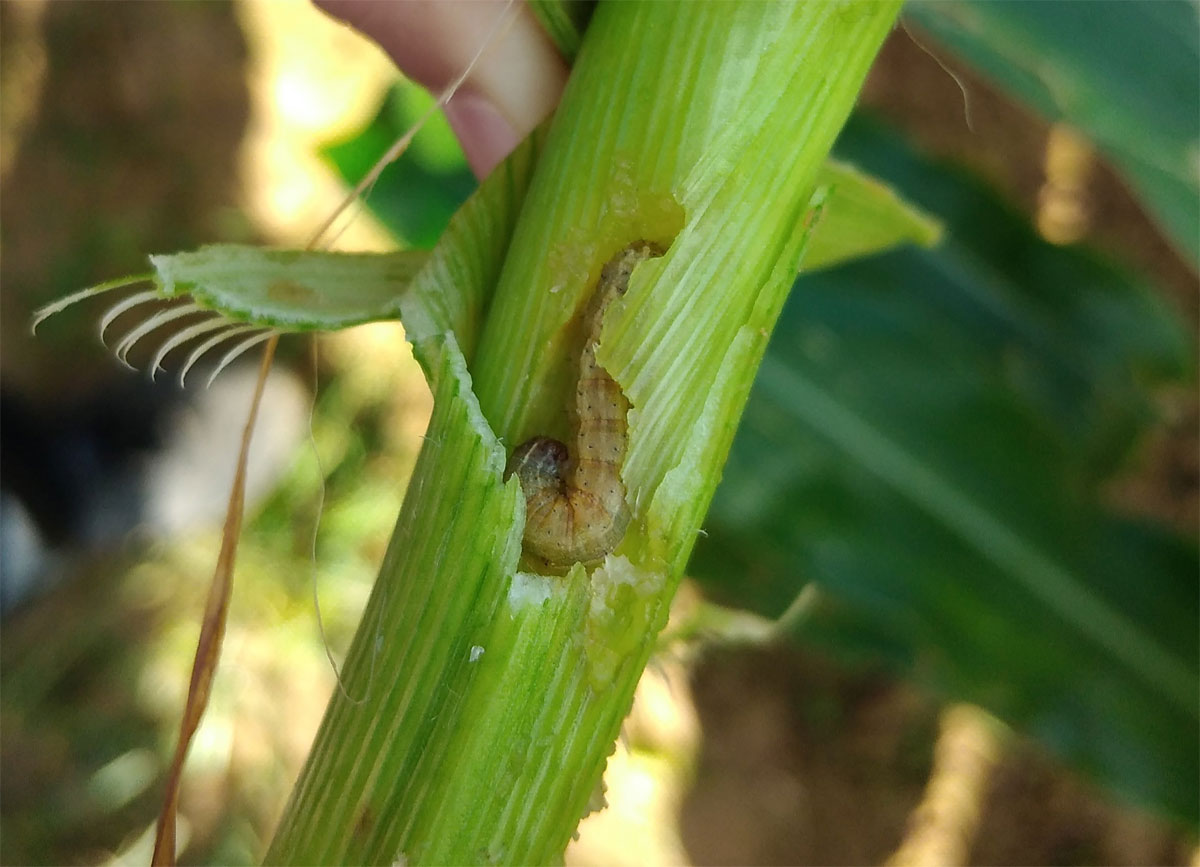
Maize, or corn as it’s often called, is one of the world’s most important staple crops. But despite its global significance, maize is under constant threat from a host of pests that can decimate yields and disrupt entire farming ecosystems. Whether you’re a smallholder or part of a larger agricultural operation, understanding maize pests, how they behave, what risks they pose, and how to manage them is crucial for maintaining a healthy crop.
In this guide, we’ll walk through the common signs of pest infestation, the most notorious culprits to watch for, and practical solutions you can implement, including expert resources like CABI, which provides tailored support for protecting your maize crops.
Spotting the signs of maize pests
Before a pest problem spirals out of control, the first step is knowing what to look for. Early detection can make all the difference, but pests often don’t announce themselves in obvious ways.
Here are some classic red flags:
- Holes or tears in leaves often indicate the presence of chewing insects, such as fall armyworms or stem borers.
- Stunted plant growth: Root-damaging pests such as wireworms can cause delayed development and wilting.
- Silk feeding: If you notice maize silk chewed down, suspect the corn earworm.
- Discoloured or malformed kernels: This could be caused by sap-sucking insects such as aphids or by fungal infections facilitated by pest wounds.
- Frass (insect excrement): Often found near feeding sites, especially in maize ears or stems.
Pay close attention during early growth stages and right before pollination, as maize is most vulnerable during these windows.
Common maize pests and their risks
Not all pests are created equal. Some cause superficial damage, while others can wipe out entire fields if left unchecked. Here’s a breakdown of the worst offenders:
1. Fall armyworm (Spodoptera frugiperda)
This invasive pest has quickly become a global menace. It targets the whorl and tassel area of maize plants and can destroy entire crops in a matter of weeks. The larvae feed on leaves, creating a ragged, shot-hole appearance.
Risks: Reduced photosynthesis, poor ear development, and total crop loss in severe cases.
2. Maize stem borer (Busseola fusca, Chilo partellus)
Stem borers lay their eggs on the maize leaves, and the larvae tunnel into the stalks. This weakens the plant structure and disrupts nutrient flow.
Risks: Lodging (plants falling over), reduced grain filling, lower yield quality.
3. Corn earworm (Helicoverpa zea)
Feeding primarily on the developing kernels, this pest enters through the silk and can render maize cobs unsuitable for consumption.
Risks: Yield and quality loss, increased vulnerability to moulds and mycotoxins.
4. Aphids
While less visually destructive, aphids can suck the life out of your crop, literally. They feed on plant sap and secrete honeydew, which leads to sooty mould.
Risks: Virus transmission, stunted growth, fungal development.
Solutions to tackle maize pests
Controlling maize pests isn’t just about spraying chemicals. In fact, overreliance on pesticides can lead to the development of resistant pest populations and damage the environment. The best results often come from Integrated Pest Management (IPM), a balanced approach that combines cultural, biological, and chemical methods.
Cultural control
- Crop rotation: Switching crops between seasons disrupts pest life cycles.
- Planting early: Getting your maize in the ground before pest populations peak can limit damage.
- Field hygiene: Removing crop residues helps eliminate overwintering pests.
Biological control
- Natural predators: Encourage beneficial insects like ladybirds, lacewings, and parasitoid wasps.
- Biopesticides: Products made from bacteria (like Bacillus thuringiensis) can be effective against larvae while being safe for the environment.
Chemical control
If pest levels cross economic thresholds, selective insecticides may be needed. However, always rotate active ingredients to prevent resistance, and follow safe application guidelines.
Tackling maize pests isn’t a one-size-fits-all endeavour. Farmers facing maize pests can turn to CABI for tailored, science-backed solutions. Their guidance complements integrated approaches like cultural and biological control.
How climate change is reshaping maize pest threats
Climate change is having a profound impact on agriculture, and one of the lesser-known consequences is how it’s reshaping pest dynamics in maize crops. As global temperatures rise and weather patterns become more erratic, pests are appearing in new regions, surviving longer seasons, and reproducing more quickly.
For example, pests that once died off during cold winters are now able to persist year-round, leading to more frequent and severe infestations. Unseasonal rainfall and prolonged droughts can also stress maize plants, making them more vulnerable to attack. Meanwhile, shifting climates may favour certain pest species over others, upsetting the natural balance between crops and their enemies.
This changing landscape poses real challenges for farmers, as traditional planting calendars and pest control methods may no longer be effective. Pests that were once considered minor or localised can quickly become widespread and damaging.
To stay ahead of these evolving threats, it’s increasingly important to monitor pest activity closely, adapt management practices, and stay informed about regional pest trends. As climate patterns continue to shift, so too must our strategies for protecting maize crops, with resilience and flexibility now key to long-term success.
Wrapping up: stay alert, stay proactive
Pests are an inevitable part of growing maize, but that doesn’t mean you have to take the damage lying down. By learning the signs, understanding the key threats, and implementing a range of control methods, from crop rotation to beneficial insects, you can protect your yields and keep your farming operation resilient.
Don’t forget: reliable guidance can go a long way. Organisations like CABI are there to offer localised, expert help that’s just a click away.
Your maize deserves the best chance to thrive, so stay alert, act early, and manage pests wisely.